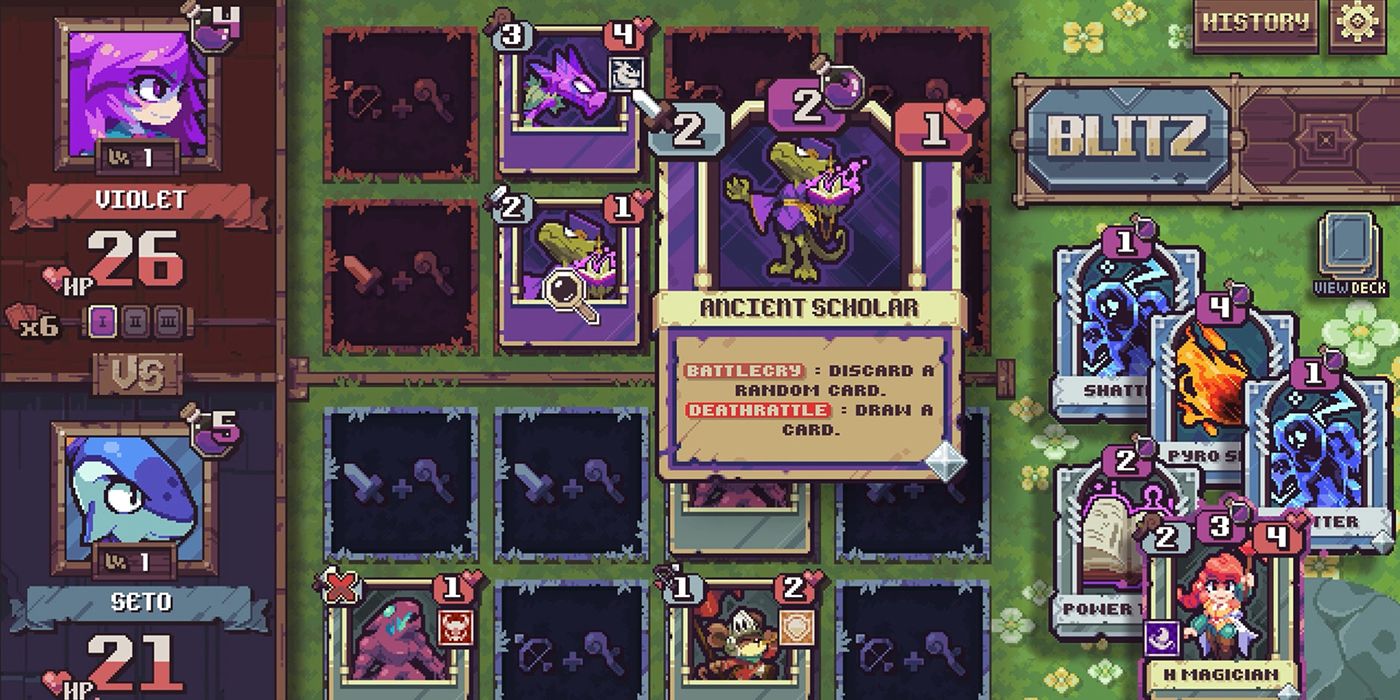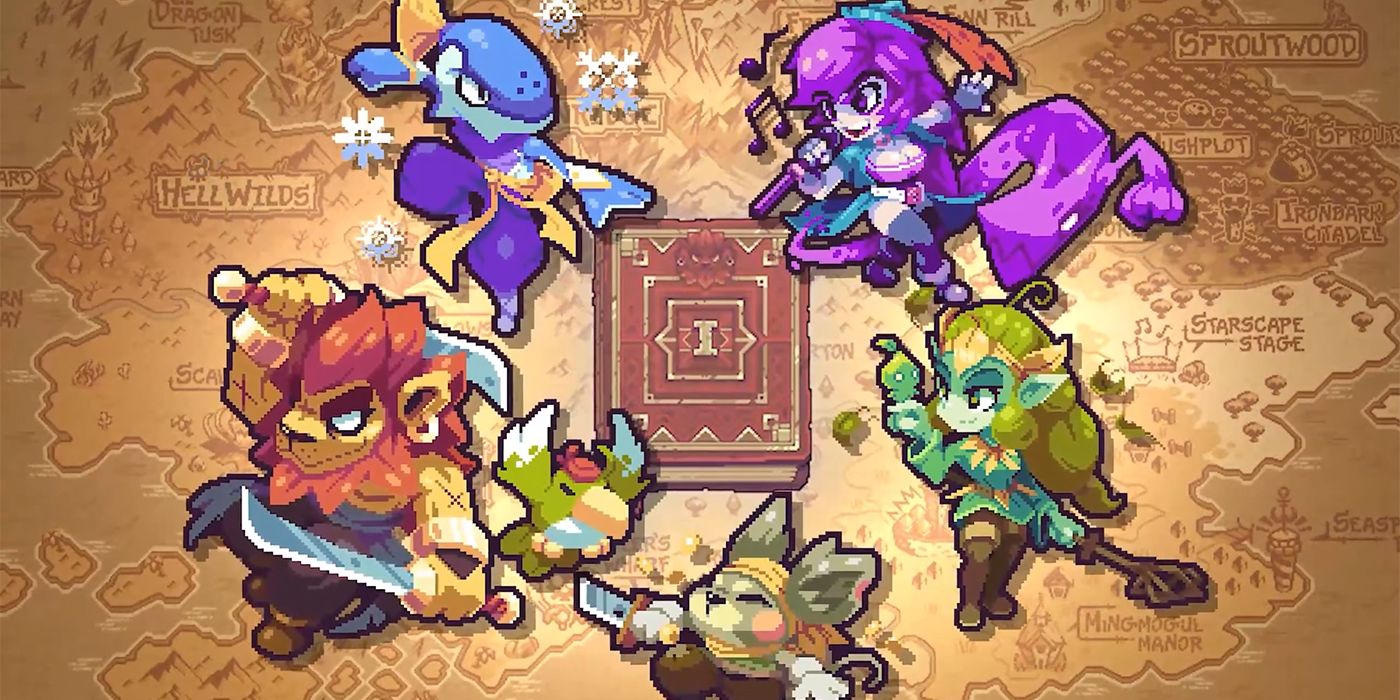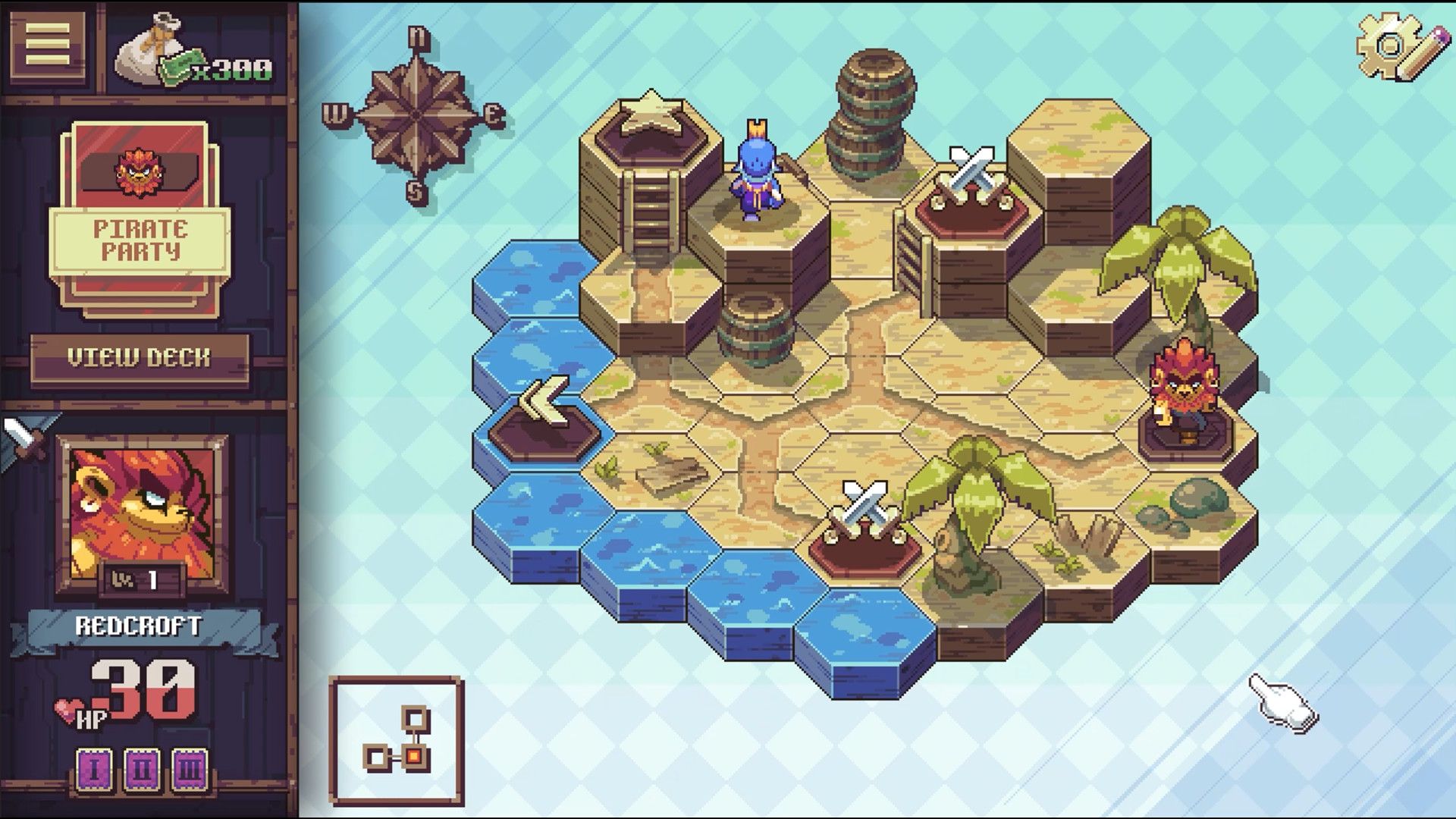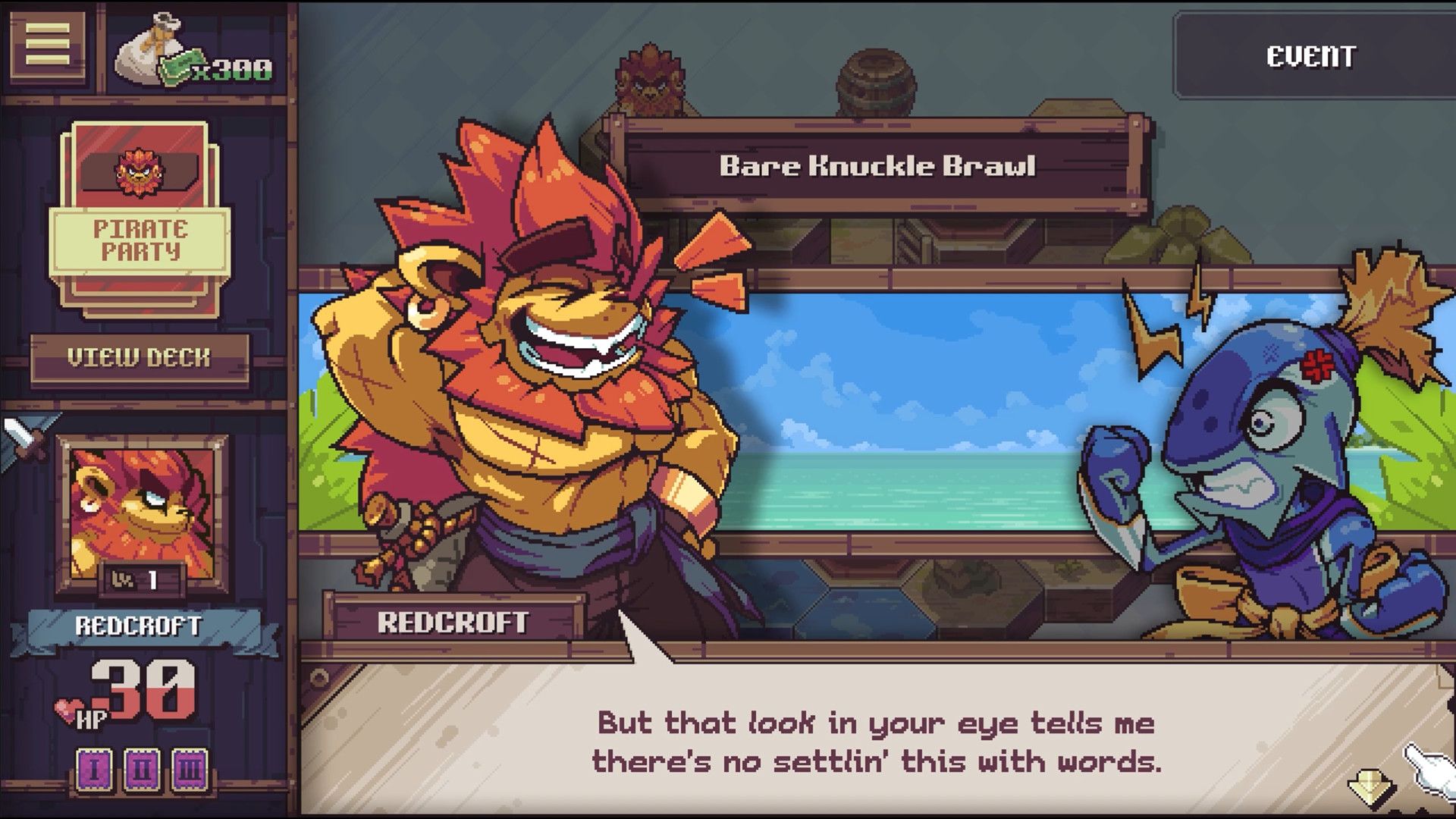Judging by its arcade-like pixel graphics and emphasis on lighthearted storytelling, most gamers would never guess that Cross Blitz is a card battling game at heart. But Tako Boy, a development duo comprised of programmer Tom Ferrer and artist Phil Giarrusso, is setting out to do something different in a crowded genre that can be intimidating to new or casual players. That is not to say Cross Blitz will be a shallow or unchallenging experience, as the cute visuals and upbeat audio are backed up by a serious commitment to combo-centric deck building and strategic dueling.
In an interview, Tako Boy spoke with Game Rant about Cross Blitz's unique fusion of serious card play, welcoming aesthetics, and character-driven storytelling. Ferrer and Giarrusso explain their storytelling ambitions, discuss the game's multitude of influences, and reveal the most crucial ingredient in designing a competitive, digital CCG.
Even though indie games featuring pixel art have become something of a trope, pairing those player-friendly visuals with a genre that typically takes itself very seriously is a smart juxtaposition. And artist Giarrusso makes an astute observation about pixel art's enduring appeal in an era where graphics are becoming increasingly realistic.
The Unique Appeal of Pixel Art
Giarrusso has been doing pixel art for video games since he started in the industry in 2013. As a specialty, pixel art is sought after and good for finding new work, especially among the indie game development community. But the appeal of pixel art runs deeper than developers trying to capitalize on players' nostalgia. Giarrusso observed:
"I think there is an element of nostalgia for sure. A lot of those indie developers are expanding on those ideas. But I think there is something about pixel art that just feels like a video game, and it’s a really quick way to capture that vibe. It is so unique to video games in general. It’s iconic like that."
Pixel art has expanded to many mediums beyond video games, from digital paintings and music videos to Perler bead approximations of popular game sprites, coming full circle to pixel art representations of non-pixel art games. Despite branching out from its original medium, however, pixel art will always beckon viewers to associate the subject being depicted with video games, even if there is no interactivity whatsoever. Just as writing a word in cursive makes it appear more formal, drawing a word with pixels makes it appear intrinsically video game-y.
A Self-Aware Aesthetic
In addition to serving as a visual shorthand for video games, the style evokes a certain era of mechanical and graphical complexity that is in many ways simpler, and more accessible than modern titles. Even in mature pixel art titles such as Blasphemous, the aesthetic sets certain expectations for the player. It not only suggests a mood, but a certain bandwidth of mechanical complexity.
And there is a good reason for this. While certain artists look down on pixel art as being 'easy' or 'simplistic,' Giarrusso points out: "when your sprites get bigger, the work gets exponentially longer." In many ways, the gameplay associated with today's most popular genres, like open world adventures and first-person shooters, is unfeasible with precisely drawn pixel art sprites.
Self-awareness lends itself to humor, but it can also be used to establish a welcoming atmosphere. And Tako Boy's goal with Cross Blitz is to open up the fairly insular and competitive card battling genre to fans of single-player, story driven games like RPGs. By reimagining a hyper realistic and serious genre with the charm of an arcade title, Tako Boy is welcoming a new bandwidth of player to the table.
Synergy is the Key to Satisfaction
But how does one preserve the integrity of a card battling experience after radically changing it's appearance and narrative presentation? In order for its project to succeed, Tako Boy needs to capture the heart of a card battler, which also has its own, unique appeal.
Regarding the most challenging and most important aspect of building a competitive card game Cross Blitz's programmer, Tom Ferrer, said:
"Definitely, for me, it’s synergy. You want to be able to use cards that help you use other cards in other ways. You want your cards to feel like they have multiple uses. I don’t want a card that will be used in just one deck."
The appeal of competitive card games—particularly those that involve deck building from randomized boosters—is based on skillful combination. Cards with singularly powerful effects, or cards that require other specific cards to be effective, are generally less satisfying to play with than cards that can be employed a number of different ways to suit different scenarios. To capture that blend of constraints and compliments, Cross Blitz's five playable characters each represent their own unique faction with their own pool of cards. Furthermore, these factions interact with a shared pool of neutral cards in unique ways.
In Cross Blitz, selecting a character is not only a matter of aesthetic preference, but theme as well, similar to the five colors of Magic: the Gathering, which tend to favor certain mechanics, playstyles and visuals. That respect for the genre's core appeal, paired with the welcoming self-awareness of pixel graphics, seems like a game-winning combination.
Cross Blitz is currently in development.




